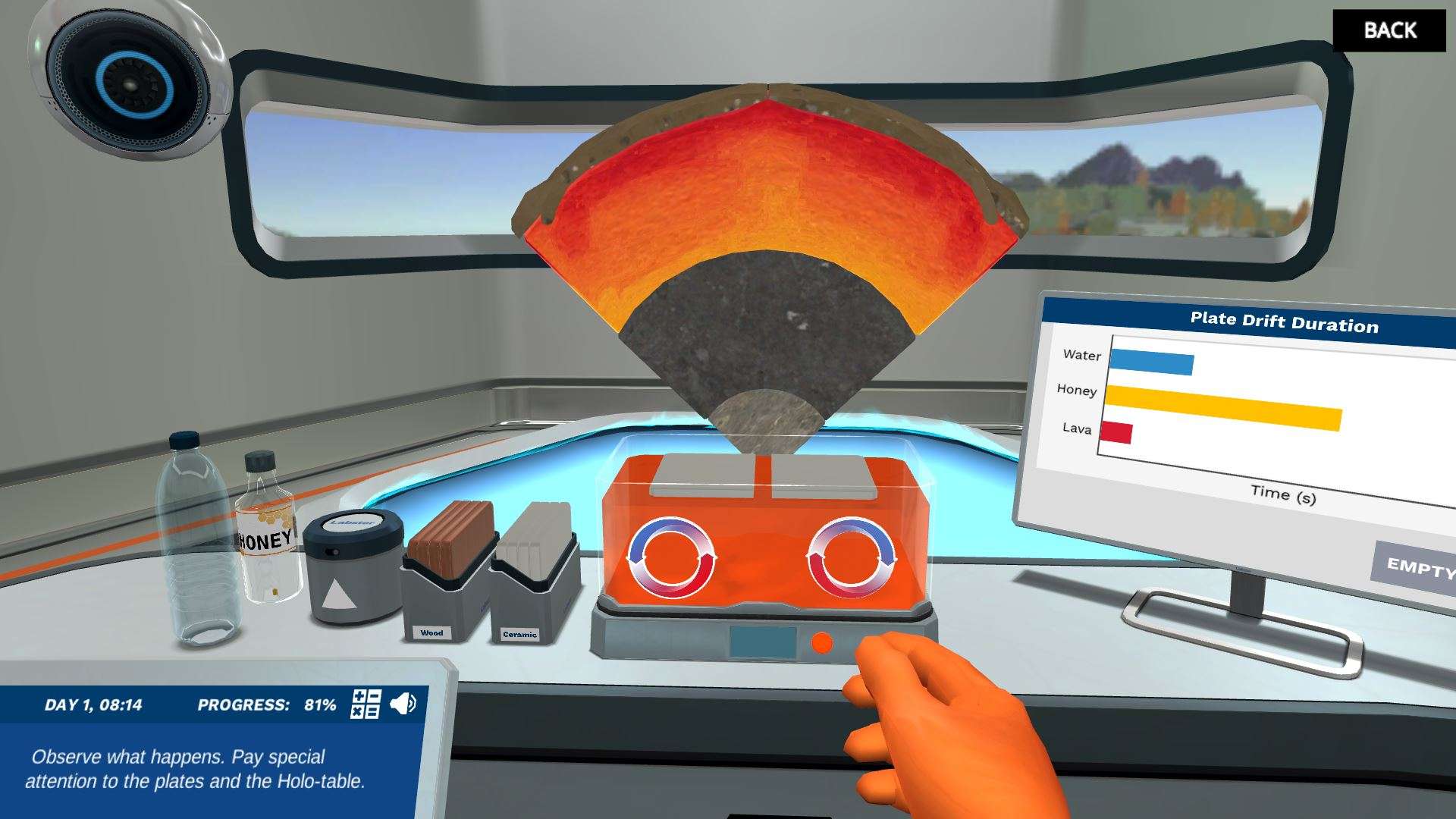Heading 1
Heading 2
Heading 3
Heading 4
Heading 5
Heading 6
Lorem ipsum dolor sit amet, consectetur adipiscing elit, sed do eiusmod tempor incididunt ut labore et dolore magna aliqua. Ut enim ad minim veniam, quis nostrud exercitation ullamco laboris nisi ut aliquip ex ea commodo consequat. Duis aute irure dolor in reprehenderit in voluptate velit esse cillum dolore eu fugiat nulla pariatur.
Block quote
Ordered list
- Item 1
- Item 2
- Item 3
Unordered list
- Item A
- Item B
- Item C
Bold text
Emphasis
Superscript
Subscript
About This Simulation
Tectonic plates travel two to three centimeters each year, but why? And how? Create convection currents in different materials to understand what causes plate movement and why it is so slow.
Learning Objectives
- Describe the process of convection
- Relate the source of Earth’s internal heat to the movement of plates
- Identify plate tectonics as a surface expression of convection currents in the mantle
About This Simulation
Lab Techniques
- Convection lab experiment
- Temperature-dependent density of materials
- Convection currents
- Sources of Earth’s heat
- Chemical and physical properties of Earth’s layers
Related Standards
- ESS2.B-H2
- HS-ESS2-3
Learn More About This Simulation
Tectonic plates are always moving beneath you! In this simulation, you will investigate the process of convection, learn what drives the movement of tectonic plates, and perform an experiment with an extremely hot lava sample!
Explore the driving mechanism of plate tectonics
Start by setting up your first lab experiment and inspecting what happens in a water tank when heated from below. Then, move to the interactive theory station and explore the chemical and physical properties of the Earth’s structural layers. Discover why these properties are important for plate tectonics, and how this relates to our experiment.
Model convection currents in the mantle
Convection currents occur throughout nature in water, air, and within the Earth's mantle. In this lab, you will heat different materials, assess the timescales of convection currents, and note how this affects the movement of plates on the surface. Be careful and be sure to wear your protective lab equipment as you will have to handle a scorching hot lava sample!
Find the correct direction of flow
Using the knowledge you have gained from your lab experiments, you will build a futuristic holographic model of Earth to determine the direction of flow of convection currents within the mantle. Do you think you can determine what drives the movement of tectonic plates?
For Science Programs Providing a Learning Advantage
Boost STEM Pass Rates
Boost Learning with Fun
75% of students show high engagement and improved grades with Labster
Discover Simulations That Match Your Syllabus
Easily bolster your learning objectives with relevant, interactive content
Place Students in the Shoes of Real Scientists
Practice a lab procedure or visualize theory through narrative-driven scenarios


FAQs
Find answers to frequently asked questions.
Heading 1
Heading 2
Heading 3
Heading 4
Heading 5
Heading 6
Lorem ipsum dolor sit amet, consectetur adipiscing elit, sed do eiusmod tempor incididunt ut labore et dolore magna aliqua. Ut enim ad minim veniam, quis nostrud exercitation ullamco laboris nisi ut aliquip ex ea commodo consequat. Duis aute irure dolor in reprehenderit in voluptate velit esse cillum dolore eu fugiat nulla pariatur.
Block quote
Ordered list
- Item 1
- Item 2
- Item 3
Unordered list
- Item A
- Item B
- Item C
Bold text
Emphasis
Superscript
Subscript
A Labster virtual lab is an interactive, multimedia assignment that students access right from their computers. Many Labster virtual labs prepare students for success in college by introducing foundational knowledge using multimedia visualizations that make it easier to understand complex concepts. Other Labster virtual labs prepare learners for careers in STEM labs by giving them realistic practice on lab techniques and procedures.
Labster’s virtual lab simulations are created by scientists and designed to maximize engagement and interactivity. Unlike watching a video or reading a textbook, Labster virtual labs are interactive. To make progress, students must think critically and solve a real-world problem. We believe that learning by doing makes STEM stick.
Yes, Labster is compatible with all major LMS (Learning Management Systems) including Blackboard, Canvas, D2L, Moodle, and many others. Students can access Labster like any other assignment. If your institution does not choose an LMS integration, students will log into Labster’s Course Manager once they have an account created. Your institution will decide which is the best access method.
Labster is available for purchase by instructors, faculty, and administrators at education institutions. Purchasing our starter package, Labster Explorer, can be done using a credit card if you are located in the USA, Canada, or Mexico. If you are outside of North America or are choosing a higher plan, please speak with a Labster sales representative. Compare plans.
Labster supports a wide range of STEM courses at the high school, college, and university level across fields in biology, chemistry, physics, and health sciences. You can identify topics for your courses by searching our Content Catalog.








.JPG?fm=jpg&w=700&h=400)
.JPG?fm=jpg&w=700&h=400)





